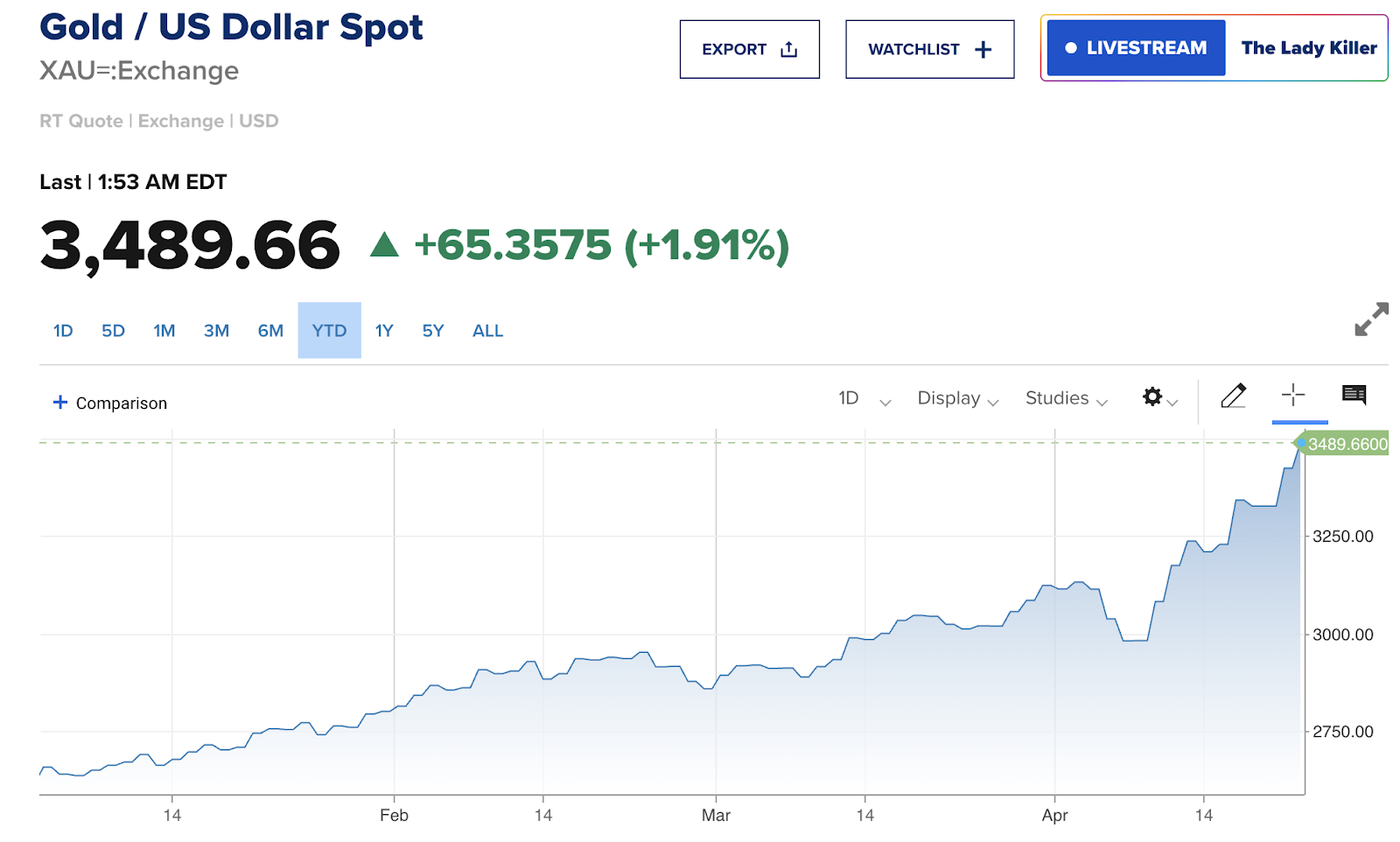Source: Cointelegraph Original: "{title}"
As the saying goes, "Buy gold in chaotic times, antiques in prosperous times, and stock up on grain during disasters." Since Trump took office, every swing of the tariff stick has pushed international gold prices to new heights. As of April 22, international gold prices have risen nearly 30% since the beginning of the year.
According to the latest statistics released by the State Administration of Foreign Exchange of China earlier this month, the People's Bank of China (PBOC) has increased its gold holdings for five consecutive months. As of the end of March, China's gold reserves stood at 73.7 million ounces, up from 73.61 million ounces at the end of February, an increase of 90,000 ounces or 0.15%. A report from the World Gold Council also indicated that in the first quarter of this year, global central banks net purchased 289 tons of gold, equivalent to 72% of the total purchases for the entire year of 2022.

Gold price trends this year. Source: CNBC
Although the value of gold is built on a foundation of trust spanning hundreds of years, Bitcoin (BTC), with its fixed supply and increasingly clear regulatory framework, is attracting more and more institutional and retail investors into the market. The parallel strengthening of these old and new safe-haven assets reflects a trend in the market seeking diversified reserve strategies in uncertain times.
Last Tuesday (April 15), the U.S. released a "fact sheet" mentioning that due to retaliatory measures taken by China, goods exported from China to the U.S. now face tariffs as high as 245%, which led to a temporary decline in the cryptocurrency market. However, Bitcoin's price quickly rebounded and is currently stabilizing around $88,000.
On-chain market intelligence provider Glassnode reported that the number of addresses holding more than 1,000 Bitcoins increased from 2,037 at the end of February to 2,107 on April 15, adding 70 "whale" wallets, the highest point in four months. Additionally, since March 11, the holdings of Bitcoin whale addresses have also increased by over 129,000 Bitcoins, valued at approximately $11.2 billion, with an average purchase price of $87,500.
Some believe that Bitcoin's strong performance is due to its growing popularity as a hedge against inflation, a theory that is gaining acceptance in the context of China seemingly reducing its reliance on dollar-denominated assets.
Research shows that there is often a negative correlation between the dollar and gold prices. This means that in most cases, if gold prices rise, the dollar typically weakens.

Dollar index trends this year. Source: MarketWatch
On Monday, influenced by U.S. tariff policies, the dollar further depreciated, falling more than 1% against the euro, reaching its lowest point in over three years. The dollar-yen exchange rate also dropped to its lowest level since last September.
The continued weakening of the dollar has raised concerns in the market that U.S. tariff policies may have harmed the dollar's status as a safe-haven asset. An article published by Fortune magazine on April 11 mentioned that analysts warned of a "de-dollarization" phenomenon emerging globally in response to U.S. foreign policy decisions. George Saravelos, Global Head of Foreign Exchange Research at Deutsche Bank, stated in a report: "We are entering uncharted territory in the global financial system."
Related: Arthur Hayes: Bitcoin (BTC) may break $100,000 due to U.S. Treasury buyback plans.
免责声明:本文章仅代表作者个人观点,不代表本平台的立场和观点。本文章仅供信息分享,不构成对任何人的任何投资建议。用户与作者之间的任何争议,与本平台无关。如网页中刊载的文章或图片涉及侵权,请提供相关的权利证明和身份证明发送邮件到support@aicoin.com,本平台相关工作人员将会进行核查。




